Of all of life’s experiences, being charged by a petulant hippo must surely be one of the most bizarre. His eyes, just breaking the surface of the river, followed us as we glided by, then he was under for a moment, before bursting through the water and bounding towards us in a tumbling, cascading bow wave, roaring at us to back off.
Fortunately, it’s not an everyday occurrence. And helped further by it being set up by a guide that not only understands animal behaviour, but the behaviour of individual animals. “He’s got a short fuse,” Fraser tells us as we pull away, “so he’s easy to wind up…”. This, perhaps, is the charm of one of Africa’s lesser-known safari destinations, Zambia.
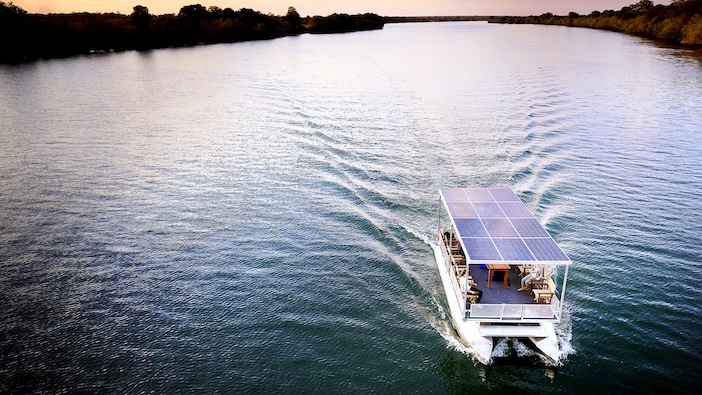
I’ve been on safari before, but nothing like this. I’m in a small, solar-powered flat-bottomed boat gliding upstream on the river Kafue, in the national park of the same name. It’s the hour before sunset, when animals make for watering holes, and we’re treated to an abundance of wildlife. Elephant families padding along the shoreline, pin-tailed swallows darting about us, baby crocs basking at the water’s edge, and, of course, hippos; scores of them, their snouts and ears resting on the surface like static flotsam, serene in the stillness – until one gets one angry, of course.
This being southern Africa, one’s first taste of wildlife comes virtually straight off the plane. Lilayi Lodge is a private game reserve with chalets less than an hour from the airport on the outskirts of Lusaka. Set on a 650 hectare farm, a sign indicates animals ‘moving freely’ as we enter, and it’s not long before we spot a giraffe in the trees as we meander to the lodge.
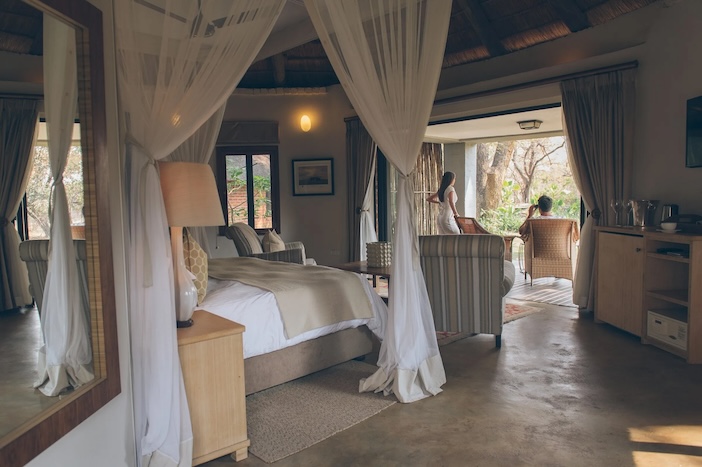
Chalets are arranged ‘kraal’ style, with huge thatched conical ceilings, and the anticipated dark wood interiors are instead tasteful, contemporary furnishings that wouldn’t be out of place in a Mayfair hotel. Indeed, I don’t know what I was expecting but bespoke toiletries and their own wines over dinner was certainly not indicative of the rustic accommodation I was expecting. This dash of luxury does not detract from the authenticity on our doorstep, however; a short game drive concludes with a bush sundowner and roaming fauna, notably an occasional warthog sniffing about the veranda. If you want an introduction to Zambia within moments of landing in the capital, this is it.
If it makes for an idyllic stop to shake off the journey, Lilayi is a mere appetiser to the real reason to come to Zambia. At 22,400 km2, Kafue National Park is – as the customary benchmark would indicate – about the size of Wales. You can fly in under an hour from Lusaka, but to do so you’d miss seeing Africa proper. It’s a four-hour drive on the M9, but there’s no motorway to speak of, more a single strip of tarmac, essentially, through flat savannah and farmland, occasionally punctuated by half-built breeze-block buildings, thatched rondavels and makeshift market stalls that make up the villages we pass through.
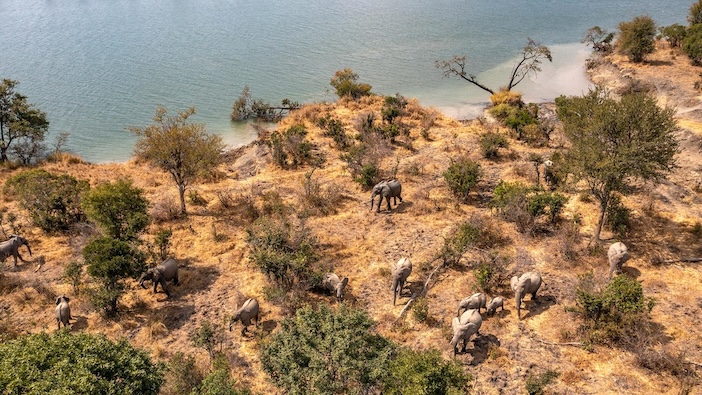
From a checkpoint into the boundary of the park, the landscape changes noticeably for all the trees and a lack of any civilisation. We are deep into the country, yet it’s still an hour down an arrow straight road to our destination.
Set on the banks of the Kafue river, a tributary of the Zambezi, to call Ila Safari Lodge a ‘camp’ is something of an understatement. The main ‘tents’ are capacious domes housing a lounge and dining area right on the riverbank. Staff advise us of ‘traffic’ through the camp – and no sooner have I arrived than I bump into Vincent, the resident hippo, grazing between sun loungers at the infinity pool.
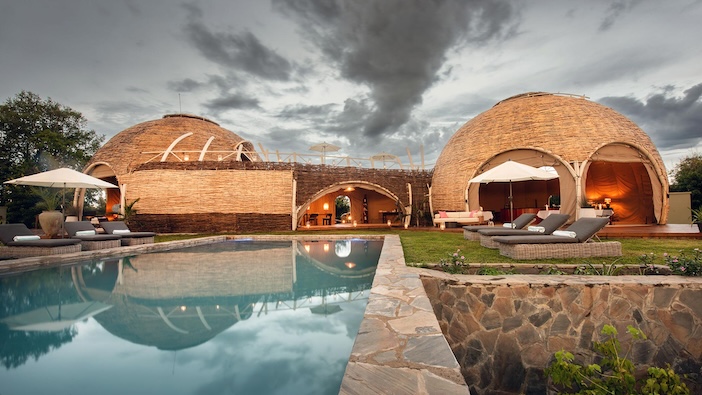
Similarly, the introduction to my tent is paused while another local, a young bull elephant they’ve named Nelson, meanders amid the undergrowth. Here, it’s the animals that own the grounds, we are merely guests. Even when settling in on the veranda, a tribe of expectant monkeys tentatively approach before scuttling off when I react, and as I wander back to the lounge for our first game drive, I’m accompanied by glances from grazing pukus.
The setting, too, is a surprise. The river notwithstanding, most camp experiences tend to feel more akin to circling wagons; but to give each a river view Ila’s tents are spread out, so you have your own distinct space, which of course gives the wildlife the opportunity to get up close and personal. You genuinely feel like you’re camping – nay, glamping – in the bush. It’s one of the most well-appointed tents I’ve stayed in; four-poster, copper basins, wraparound balcony, outdoor shower. And it’s extraordinary to think we’re hours from the nearest town.
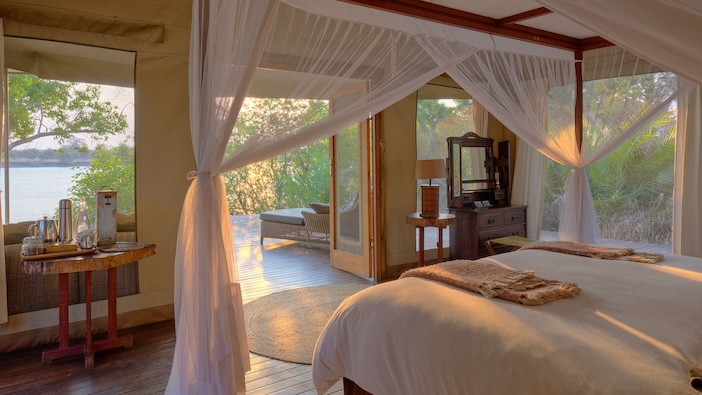
Part of the Green Safaris portfolio, Ila’s sustainability credentials are self-evident from those striking infinity-shaped ‘boma’ domes, made from bricks cut from termite mounds and bamboo, there’s a ‘no plastic’ rule and their vehicles are electric, making for ‘silent safaris’, which offers another advantage when approaching animals in the bush. They are, too, partners of the Zambian Carnivore Programme, an NGO dedicated to conserving large carnivores and the ecosystem they rely on, supporting research, anti-poaching and the like. It’s had telling results, too; many of the rescued animals’ descendants out in the bush are proof it’s working.
As you’d expect, itineraries are planned with game drives in mind; dawn and dusk being optimum times for active wildlife, so there’s a wake-up call at 5am, with hot water for tea and light pastries, before we’re off, then back for a hearty brunch and time by the pool in the midday sun. Our first drive yielded a rare treat; a cheetah, reclining in the shade, giving us furtive looks as we approach, but otherwise unphased. She’d clearly just fed, Fraser, our guide, tells us, so isn’t inclined to react – apart from which, being the only vehicle for miles, we clearly didn’t pose a threat.
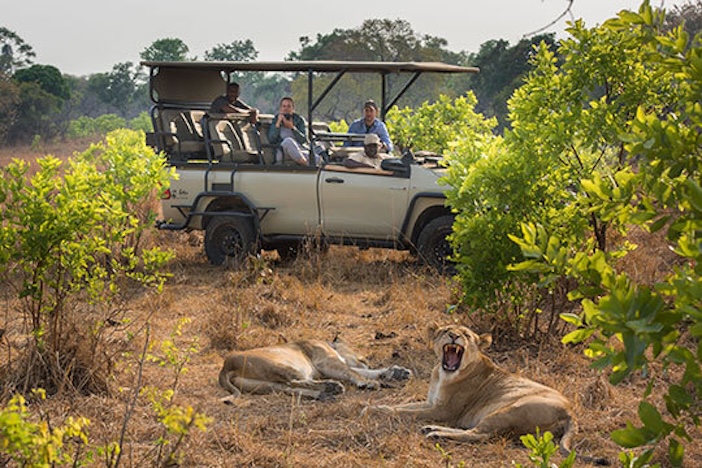
Our guides, like Fraser, aren’t simply a mine of information, as you might expect, but are animated with anecdotes and insights, notably the local vernacular for the animals’ names, like the ‘work harder’ bird. “Can you hear that?” he pauses, and we hear a call that tapers in pitch, “it’s the flat battery bird.” He’s also an excellent mimic, imitating the squeaking wheelbarrow call of the boubou, and beckoning hippos with a guttural, staccato grunt.
After a sundowner on the riverbank, in sight of crocs and bathing hippos, dinner on the veranda proves an exceptional treat, and a marvel that they’re able to conjur up restaurant quality dishes in the bush. We dine on aubergine ricotta rolls and herb-crusted fish, with obligatory interruptions from the resident fauna. It’s only when back in the tent, with the lack of human voices, that Africa comes into its own. The noises at night; the shimmer of crickets, a monkey howl, a pair of hippos guffawing on the riverbank below, and into dawn the chorus is unlike any you’ll hear.
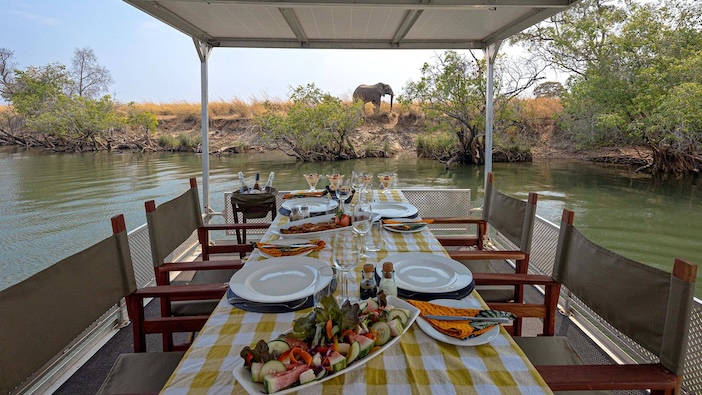
Ila’s position adds an additional angle on safari; the river tour. In its solar-powered boat, one ‘drive’ affords us a lioness basking under the shade of an acacia, while enjoying lunch (us, I mean, on the boat) as we glide downstream, and of course, our dusk tour, and that encounter with the bull hippo. Other than that moment of theatre, what’s telling is the sense of serenity. Those expecting the bloodletting one sees at watering holes on TV will be sorely disappointed – and as the sun dipped and we drifted back downstream, Fraser shut the engine and we instinctively paused our conversation, taking in the tranquillity.
Through these game drives in Kafue – and, indeed, at Ila – several things occurred to me; they have their own animal highlights, their own way of interacting, their own approach to the experiences, and their own environments. It’s not about sweeping plains like the Mara, Zambia’s topography affords a multifarious option; Kafue’s myombo woodland, the plains in the west, jungle in Luangwa, noted for the highest concentration of leopards in the world. But, perhaps most noticeably, was just how personal it feels. At better-known destinations if a leopard is spotted in a tree a call goes out and a fleet of jeeps descend on the poor creature, but here we’re the only vehicle for miles.
This, evidently, is Zambia’s gift. One of many, it would seem, and I was barely getting started.
For more information about Lilayi Lodge, please visit www.lilayilodge.com. For more information about Ila Safari Camp and Green Safaris, please visit Ila Safari Lodge.
For information about Zambia, including details of other destinations, and to start planning your trip, please visit the official tourism website at www.zambia.travel.
Larry’s Zambian adventure continues next weekend when he experiences the ‘Smoke that Thunders’ and a rather curious traffic jam…





1 Comment
A fascinating and detailed insight into what was clearly an amazing experience!